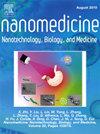纳米材料在静脉血栓栓塞诊治中的应用研究进展
IF 4.6
2区 医学
Q2 MEDICINE, RESEARCH & EXPERIMENTAL
Nanomedicine : nanotechnology, biology, and medicine
Pub Date : 2025-04-18
DOI:10.1016/j.nano.2025.102820
引用次数: 0
摘要
静脉血栓栓塞症(Venous thromboembolism, VTE)包括深静脉血栓形成(deep vein thrombosis, DVT)和肺栓塞(pulmonary embolism, PE),是一种症状隐匿、进展迅速的严重血管疾病。纳米材料具有高比表面积、生物相容性和可修饰性,为静脉血栓栓塞的诊断和治疗提供了新的思路。由于动脉和静脉血栓形成机制和部位的差异,需要制定有针对性的诊断和治疗策略。本文以静脉血栓栓塞为重点,综述了纳米材料在诊断和治疗方面的最新进展和局限性。在诊断方面,纳米材料可用于制备生物传感器,检测凝血酶、纤维蛋白等,也可增强成像对比度,提高诊断准确性。在治疗方面,纳米载体可以靶向并释放抗凝/溶栓药物,提高疗效,减少副作用。然而,纳米材料的局限性要求研究人员对其性能进行优化,以实现安全有效的VTE诊断和治疗发展。本文章由计算机程序翻译,如有差异,请以英文原文为准。
Research progress on the application of nanomaterials in the diagnosis and treatment of venous thromboembolism
Venous thromboembolism (VTE), including deep vein thrombosis (DVT) and pulmonary embolism (PE), is a serious vascular disease with hidden symptoms and rapid progression. Nanomaterials provide new ideas for the diagnosis and treatment of VTE due to their high specific surface area, biocompatibility and modifiability. Due to differences in the formation mechanism and location of arterial and venous thrombosis, targeted diagnosis and treatment strategies need to be developed. This review focuses on VTE and summarizes the latest progress and limitations of nanomaterials in diagnosis and treatment. In terms of diagnosis, nanomaterials can be used to prepare biosensors to detect thrombin, fibrin, etc., and can also enhance imaging contrast to improve diagnostic accuracy. In terms of treatment, nanocarriers can target and release anticoagulant/thrombolytic drugs, improving efficacy and reducing side effects. However, the limitations of nanomaterials require researchers to optimize their properties to achieve safe and efficient development of VTE diagnosis and treatment.
求助全文
通过发布文献求助,成功后即可免费获取论文全文。
去求助
来源期刊
CiteScore
11.10
自引率
0.00%
发文量
133
审稿时长
42 days
期刊介绍:
The mission of Nanomedicine: Nanotechnology, Biology, and Medicine (Nanomedicine: NBM) is to promote the emerging interdisciplinary field of nanomedicine.
Nanomedicine: NBM is an international, peer-reviewed journal presenting novel, significant, and interdisciplinary theoretical and experimental results related to nanoscience and nanotechnology in the life and health sciences. Content includes basic, translational, and clinical research addressing diagnosis, treatment, monitoring, prediction, and prevention of diseases.

 求助内容:
求助内容: 应助结果提醒方式:
应助结果提醒方式:


